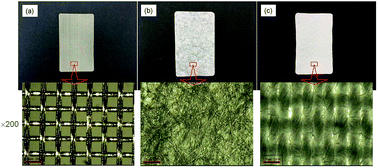Analytical method for the estimation of transfer and detection efficiencies of solid state explosives using ion mobility spectrometry and smear matrix
Abstract
Smearing method can be used as a simple and convenient sampling method for detection of trace explosives using a portable ion mobility spectrometer (IMS) in the field such as for security checks. A testing method for efficient estimation of solid state explosives transfer and IMS detection using the smear matrix was established. Furthermore, 2,4,6-trinitrotoluene (TNT) and 1,3,5-trinitro-1,3,5-triazacyclohexane (RDX) were used as model explosives, and stainless steel mesh, cellulose paper, and cotton fabric were employed as smear matrices. Samples of solid state explosives were prepared by dropping the solutions on a poly(tetrafluoroethylene) (PTFE) sheet, and the solid state explosives deposited on the PTFE sheet were then transferred to the smear matrix using a stainless steel roller. The explosive material transferred to the smear matrix was directly measured using IMS. The minimum amounts of the explosives deposited on the PTFE sheet to detect with IMS (amount of threshold, AOT) were analyzed. The AOT(TNT)s (500 ng) were nearly the same irrespective of the smear matrix types, while the AOT(RDX)s (100–500 ng) varied according to the smear matrix types. Order of the transfer and detection efficiencies of TNT and RDX was cotton fabric > stainless steel mesh > cellulose paper. Difference in the AOTs was explained by the abilities for trapping and desorption of explosive materials.



 Please wait while we load your content...
Please wait while we load your content...